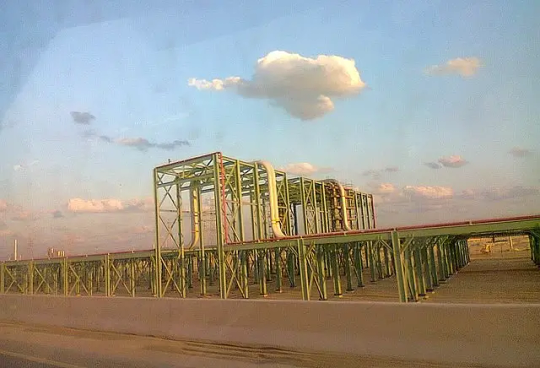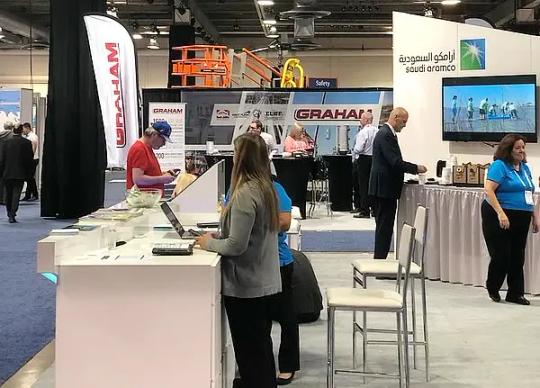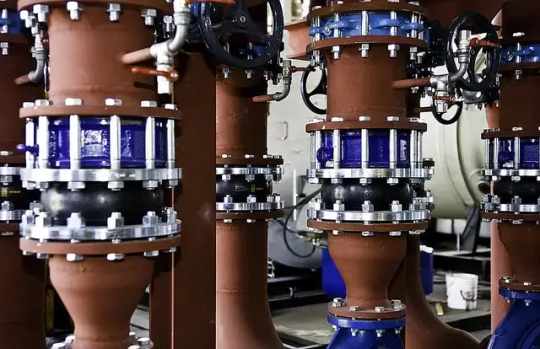#directaircapture
Explore tagged Tumblr posts
Text
youtube
The Global Direct Air Capture (DAC) Market, valued at USD 32.9 million in 2023, is projected to reach an impressive USD 4,731.7 million by 2032, growing at a staggering CAGR of 59.9% from 2024 to 2032. DAC technology, which captures CO2 directly from the atmosphere, is emerging as a critical solution for addressing climate change. According to the IEA, 27 DAC plants worldwide currently capture over 0.01 million tons of CO2 annually, with plans underway to establish at least 130 large-scale plants capable of capturing over 1,000 tons per year. Get Sample Report Copy From Here: https://www.acumenresearchandconsulti...
#directaircapture#CO2removal#carboncapture#DACmarket#climatesolutions#sustainabletechnology#carbonsequestration#netZerogoals#SolidDAC#CleanEnergy#ClimateAction#CarbonReduction#environmentallyfriendly#greentechnology#carboncaptureandstorage#IEAUpdates#renewableenergy#futureOfcarboncapture#sustainableinnovation#globalclimatechange#marketresearchreport#marketresearch#acumenresearchandconsulting#marketresearchcompany#news#Youtube
1 note
·
View note
Text
0 notes
Text
Aramco: Leading the Way to Sustainability

Paving the Path to Carbon Neutrality
Saudi Arabia's 2060 Net-Zero Ambition Riyadh, Saudi Arabia – In a bold move towards addressing climate change and curbing greenhouse gas emissions, Aramco, one of the world's foremost integrated energy and chemicals companies, announced a suite of groundbreaking projects aimed at reducing its carbon footprint. These initiatives, unveiled on the sidelines of MENA Climate Week 2023, represent a significant step towards Aramco's ambition of achieving net-zero Scope 1 and Scope 2 greenhouse gas emissions across its wholly-owned and operated assets by 2050, while also aligning with the Kingdom of Saudi Arabia's 2060 net-zero goal.

Amaco in Calgary, 2019. Photo by Jason Woodhead. Flickr.
Innovative Approaches for a Sustainable Future
Ahmad Al Khowaiter, Aramco's Executive Vice President of Technology and innovation, expressed the company's commitment to innovative solutions to combat climate change. "These projects highlight just some of the innovative ways that Aramco aims to help mitigate greenhouse gas emissions and address climate change," he said. "This includes new and groundbreaking approaches that align with our vision of a circular carbon economy." Lower-Carbon Hydrogen Following the success of a pilot project in Denmark, Aramco is set to collaborate with Topsoe, an industry leader in energy-efficient technologies, to construct a lower-carbon hydrogen demonstration plant at the Shaybah Natural Gas Liquids (NGL) recovery plant in Saudi Arabia. Expected to produce six tons of hydrogen per day, the plant will employ renewable electricity for electrified steam reforming of hydrocarbons, yielding lower-carbon hydrogen for power generation, with captured CO2 subsequently sequestered.

New energy savings boiler plant. Photo by USACE Europe District. Flickr. Direct Air Capture Aramco is also partnering with Siemens Energy to develop a Direct Air Capture (DAC) test unit in Dhahran, Saudi Arabia. With the capacity to capture up to 12 tons of CO2 per year, the test unit is a precursor to a larger pilot plant expected to capture a staggering 1,250 tons of CO2 annually, scheduled for completion in 2024. Novel CO2 Sequestration In yet another innovative stride, Aramco has successfully piloted a CO2 sequestration method using in situ mineralization. The process involves dissolving CO2 in water and injecting it into volcanic rocks in Jazan, Saudi Arabia, resulting in the permanent conversion of CO2 into carbonate rocks. This pilot project was a collaborative effort between Aramco and the King Abdullah University of Science and Technology, introducing various technologies to enhance efficiency and reduce costs. Geothermal Energy Aramco is also exploring the expansion of its renewable energy portfolio through geothermal energy, leveraging naturally heated underground aquifers to produce electricity. Identified areas on Saudi Arabia's west coast have already been mapped using advanced subsurface technologies, and investigations are underway to assess the extent of geothermal resources at each location.

Vintage photo of Aramco workers. Photo by Tribes of the World. Flickr.
Aramco's Transformation into a Sustainable Energy Leader
Aramco, officially known as the Saudi Arabian Oil Company, has a rich history and ambitious future objectives. Established in 1933, it has played a central role in shaping the global oil industry and boasts vast reserves of crude oil and gas fields, making it the world's largest integrated oil company. Yet, Aramco's vision extends beyond traditional hydrocarbons, aligning with Saudi Arabia's Vision 2060 net-zero goal. Pioneering Clean Technologies Aramco is actively investing in research and development projects focused on clean technologies, such as hydrogen fuel cells and carbon capture, as part of its transition towards a sustainable energy future. The company aims to be at the forefront of innovation, driving progress across various sectors globally. While its status as a dominant oil producer will remain pivotal for the foreseeable future, Aramco's vision surpasses conventional boundaries. The company aspires to be not just an energy provider but a catalyst for innovation, pushing the envelope and championing sustainable practices. In doing so, Aramco exemplifies how even traditional energy giants can pivot towards a more sustainable and environmentally conscious future. Sources: THX News & Aramco. Read the full article
#Aramco#Circularcarboneconomy#Cleantechnologies#CO2sequestration#DirectAirCapture(DAC)#Emissionsreductionsolutions#GeothermalEnergy#Lower-carbonhydrogen#SaudiArabianet-zero#Sustainableenergyleader
0 notes
Text
Humidity-Powered Carbon Capture: Northwestern Engineers Pioneer Low-Cost, Scalable DAC Breakthrough

Ready to see how a simple shift in humidity could transform the fight against climate change? Northwestern engineers have unveiled a moisture‑swing breakthrough for direct air capture (DAC) that combines affordability, scalability, and sustainability—without the hefty machinery or expensive resins that have long held this technology back.
In their April 3, 2025 publication in Environmental Science & Technology, the team details how materials as common as activated carbon, nanostructured graphite and metal oxides can “grab” CO₂ when air is dry and then release it when humidity rises. By harnessing abundant, low‑cost feedstocks—including organic waste streams and industrial byproducts—this approach slashes both capital and operating costs, offering a clear path to gigaton‑scale carbon removal.
Key innovations:
🔹Diverse, low‑cost substrates: Activated carbon, carbon nanotubes, flake graphite and nanostructured graphite were benchmarked alongside iron, aluminum and manganese oxide nanoparticles—each chosen for availability, cost and environmental footprint.
🔹Balancing speed and capacity: Aluminum oxide and activated carbon delivered the fastest CO₂ uptake rates (critical for rapid cycling), while iron oxide and nanostructured graphite achieved higher total capture capacities—vital for maximizing throughput per unit footprint.
🔹Pore‑architecture optimization: By tailoring pore size distributions, the team unlocked a direct lever on capture efficiency—demonstrating that materials with mesopores in the 2–50 nm range hit the sweet spot for both kinetics and capacity.
🔹Energy‑minimal regeneration: Instead of steam or thermal swings, simply raising ambient humidity by 20–30 percentage points was enough to trigger CO₂ release—eliminating the need for intensive heating or vacuum equipment.
🔹Modular, scalable design: The moisture‑swing mechanism lends itself to compact, stackable units that could be deployed in remote locations or integrated into existing infrastructure—opening opportunities in industrial parks, agricultural facilities and urban installations.
Imagine distributed networks of these passive, humidity‑powered modules quietly scrubbing millions of tons of CO₂ each year. The design simplicity means lower maintenance, fewer moving parts and the potential for solar‑powered humidity control—aligning perfectly with net‑zero roadmaps and emerging carbon‑removal marketplaces. Let’s work together to refine these moisture‑swing sorbents, validate performance in real‑world environments and expedite the journey from lab scale to global impact.
Share your thoughts on where this technology could make the biggest difference, and connect to explore how moisture‑swing DAC can fit into your decarbonization strategy!
#DirectAirCapture #CarbonRemoval #MaterialsScience #ClimateTech #Sustainability #Innovation #NetZero #CleanEnergy #GreenTech #EnvironmentalImpact
0 notes
Text
Direct Air Carbon Capture: $1.1B → $10.5B (2034) | CAGR 25.3%
Direct Air Carbon Capture (DACC) Market is projected to surge from $1.1 billion in 2024 to $10.5 billion by 2034, growing at an impressive CAGR of 25.3%. This transformative technology extracts CO₂ directly from the atmosphere, offering a scalable solution to combat climate change and achieve net-zero emissions.
To Request Sample Report: https://www.globalinsightservices.com/request-sample/?id=GIS10935 &utm_source=SnehaPatil&utm_medium=Article
DACC systems utilize high-efficiency sorbents, electrochemical CO₂ separation, and modular adsorption-desorption cycles to capture and store carbon sustainably. The captured CO₂ can be permanently sequestered underground or repurposed for carbon-neutral fuels, industrial processes, and agricultural enhancement. Advancements in AI-driven optimization, renewable-powered capture plants, and direct air-to-fuel conversion are enhancing efficiency while reducing operational costs.
With increasing policy support, corporate sustainability initiatives, and carbon credit markets, DACC is becoming a pivotal tool in climate mitigation strategies. Its integration with green hydrogen production, enhanced oil recovery (EOR), and synthetic fuel manufacturing further expands its economic viability. As industries race toward carbon neutrality, DACC is poised to revolutionize atmospheric CO₂ removal, making a low-carbon future a reality.
#DirectAirCapture #CarbonRemoval #DACCTechnology #ClimateTech #NetZero #CO2Sequestration #CarbonNeutral #GreenEnergy #CleanTech #NegativeEmissions #CCUS #ClimateInnovation #CarbonMarkets #LowCarbonEconomy #CarbonCredits #RenewableEnergy #SustainableFuture #GHGReduction #EnergyTransition #AIForClimate #Decarbonization #ClimateAction #CarbonCaptureStorage #CarbonToFuel #ESGInvesting #CO2Utilization #CarbonRecycling #SyntheticFuels #ZeroEmissions #GreenHydrogen #SustainableTech #AdvancedMaterials #CarbonNeutrality #CircularCarbon
0 notes
Text
Direct Air Carbon Capture Market to Surge to $10.5B by 2034 at 25.3% CAGR
Direct Air Carbon Capture (DACC) Market is emerging as a game-changer in the fight against climate change by removing CO₂ directly from the atmosphere. With the global push toward net-zero emissions, this cutting-edge technology is gaining massive traction across industries. 🌍💨
To Request Sample Report: https://www.globalinsightservices.com/request-sample/?id=GIS10935 &utm_source=SnehaPatil&utm_medium=Article
🔬 How Does DACC Work?
✅ Captures CO₂ from the air using advanced filtration systems 🌬️ ✅ Stores or repurposes carbon for industrial use, fuels, and construction 🏭 ✅ Supports carbon-neutral initiatives for corporations & governments ♻️ ✅ Enhances climate resilience by reducing greenhouse gas levels 🌱
📊 Market Growth & Key Trends:
🔹 North America — Leads the market with high R&D investments & sustainability policies 🇺🇸 🔹 Europe — Strong demand due to EU carbon-neutral goals & industrial partnerships 🇪🇺 🔹 Asia-Pacific — Rapid adoption driven by carbon capture projects & clean energy expansion 🇨🇳🇮🇳 🔹 Middle East & Latin America — Emerging interest in carbon credits & green innovation 🌎
🌱 Why DACC Matters?
🌍 Fights Global Warming — Directly reduces atmospheric CO₂ levels ⚡ Accelerates Net-Zero Goals — Helps industries offset emissions 💰 Boosts Carbon Markets — Generates valuable carbon credits 🔋 Supports Clean Energy — Pairs well with hydrogen & renewables
The future of carbon capture is here! With rising investment and technological breakthroughs, DACC is set to revolutionize the sustainability landscape. 🌱🚀
#DirectAirCapture #CarbonRemoval #ClimateTech #CarbonCapture #SustainableFuture #NetZero #GreenInnovation #CO2Removal #ClimateAction #CarbonNeutral #CleanTech #FutureOfEnergy #AirCarbonCapture #RenewableEnergy #Decarbonization #SustainableTechnology #ClimateCrisis #CarbonSequestration #CleanAir #CarbonOffset #CarbonMarkets #ZeroEmissions #GreenTechnology #CarbonCredits #CircularEconomy #EcoFriendlyTech #CarbonTech #DACC #GlobalWarmingSolutions #CarbonNegative
0 notes
Text
Bernhard Kegel: Mit Pflanzen die Welt retten

Was sind Blue Carbon Ökosysteme? Wie können Paludi-Produkte dazu beitragen, Moore zu retten? Was hat China beim Aufforsten falsch gemacht? Welche Ideen brüten Start-ups weltweit aus, um CO2 aus der Atmosphäre zu ziehen und zu binden? Was ist beispielsweise von Teppichen aus künstlich hergestellten Blättern zu halten, die auf der Hochsee treiben? Der neueste Geniestreich von Bernhard Kegel begeistert mit seiner gekonnten Mischung aus unbekannten Fakten, verständlich aufbereiteten Informationen sowie hochspannenden Visionen. Vor- und Nachteile, Chancen und Hindernisse werden gekonnt gegeneinander abgewogen. Halten die „Grüne Lösungen gegen den Klimawandel“ alle, was sie versprechen? Grün ist die Hoffnung Während die Klimaerwärmung weiter voranschreitet und es die Weltgemeinschaft nicht schafft, ihre CO2-Emissionen in den Griff zu bekommen, tüfteln Wissenschaftler weltweit an abenteuerlichen Ideen, um möglichst viel Kohlenstoffdioxid aus der Atmosphäre zu ziehen. Es herrscht Goldgräberstimmung. Firmen wie DirectAirCapture arbeiten mit riesigen Ventilatoren und Luftfiltern, welche das Kohlenstoffdioxid mit Wasser in den Untergrund pumpen. Doch die Erfolge sind bislang überschaubar. Dabei gibt es ein bewährtes System, das in der Lage ist, CO2 zu binden und nebenbei wertvolle Biomasse für Nahrung, Wärme, Baustoffe und Medikamente daraus zu machen. Die Photosynthese! Genauer: Bäume, Moore, Algen, Mangroven, Kleinstlebewesen wie Plankton. Seit Jahrmillionen erfolgreich, doch leider durch den menschengemachten Raubbau an der Natur arg in Mitleidenschaft gezogen. Länder wie China haben bereits angefangen, großflächig aufzuforsten. Auch, um Überschwemmungen und Sandstürmen zu begegnen. Doch gut gedacht ist nicht gut gemacht. Denn leider wurden hauptsächlich Monokulturen aus schnell wachsenden Bäumen gepflanzt, die in China gar nicht ursprünglich beheimatet waren. Das bringt weder der örtlichen Fauna einen Nutzen, noch zeichnen sich diese Wälder durch große Resilienz gegenüber Parasiten, Umweltkatastrophen oder andere Gefahren aus. Nur einer von vier Bäumen überlebt. Moore und Salzwiesen – ein Riesenpotenzial Während die meisten Menschen beim Thema „Grüne Lösungen“ an Wälder denken, ruht das vielleicht größte Potenzial in Meeren und Mooren. Werden Moore ausgetrocknet, ist das doppelt tragisch. Denn so geht ein wirkungsvoller CO2-Binder verloren. In Mooren ist bereits viel fossiles CO2 gebunden, dass dadurch wieder in die Atmosphäre gelangt. Von der Kohlenstoff-Senke zur Kohlenstoff-Quelle – ein Supergau! Nochmals in konkreten Zahlen: Würden wir alle trockenen Moore in Deutschland wieder vernässen, würden wir 40 Millionen Tonnen weniger CO2 ausstoßen – dies entspricht der Hälfte aller Emissionen der deutschen Industrie. Doch was ist mit den Bauern, die ihr Land an die Moore verlieren würden? Eine Lösung könnten die so genannten Paludi-Produkte sein – Erzeugnisse der Moorwirtschaft, die als Baustoff, Verpackungsmaterial und Bio-Heizöl verwendet werden. Wasserbüffel statt Rindern könnte eine weitere Devise lauten. Bernhard Kegel versteht es als großartiger Biologe und nicht minder großartiger Autor ein augenöffnendes „Best-Practice“-Beispiel aufzugreifen, das für manchen Schmunzler sorgt. Die charakteristischsten Produkte Hollands wie Butter und Käse seien nur dadurch entstanden, dass das Hochmoor stark entwässert wurde, dadurch absackte, für die landwirtschaftliche Nutzung unbrauchbar wurde und lediglich als Grasland für Rinder genutzt werden konnte. Dies zeigt, dass sich Verzicht manchmal in großen Gewinn verwandeln kann. Gewusst wie! Komplexe Ökosysteme: alles nicht so einfach! Die Natur ist komplex und divers. Bis heute haben Wissenschaftler die Photosynthese noch nicht vollständig begriffen. Wer glaubt, das ganze Festland mit Wäldern aufforsten zu können, um dem Klimawandel zu begegnen – und gleichzeitig so weiterzumachen wie bisher – irrt. So könnte zum Beispiel in arktischen Zonen der Albedo-Effekt für einen gegenteiligen Effekt sorgen. Wälder sind dunkler als Eisflächen, so dass Eisflächen mehr Sonnenlicht reflektieren statt aufnehmen, was das Klima abkühlt. Zudem benötigen Bäume Jahrzehnte, bis sie die nötige Größe erreicht haben, um spürbare Effekte zu erzielen. Doch die Zeit läuft uns davon … Auch sonst bringt der ökologische Gutachter Bernhard Kegel in diesem starken Buch zahlreiche Beispiele, die mit ungeahnten „Nebenwirkungen“ kämpfen. Ob künstliche Photosynthese oder Ozeandüngung, was sich zunächst gut anhört, kann unter Umständen ganze Ökosysteme zum Kippen bringen. Das Original ist unschlagbar In seinen ebenso hochinteressanten wie (für Tierfreunde) hochemotionalen Büchern „Die Natur der Zukunft“ und „Ausgestorbene Tiere“ spricht sich Bernhard Kegel bereits vehement für den Erhalt bestehender Ökosysteme aus. Denn egal was Wissenschaftler und Visionäre gerade auch tüfteln, an das Original, sprich intakte (Regen-) Wälder, Moore, Salzwiesen, Mangrovenwälder und gesunde Meere, kommt nichts ran. Nicht mal ansatzweise. Zum Vergleich: Mit dem stark gehypten DirectAirCapture Verfahren lassen sich pro Jahr 4000 Tonnen CO2 binden. Bei den Blue Carbon Küstengebieten sprechen wir von 3,4 Gigatonnen jährlich!„Es ist vollkommen absurd, enorme finanzielle Mittel und unendlich viel Arbeit in die Aufforstung von Wäldern, die Wiedervernässung von Mooren und die Wiederherstellung von Seegraswiesen, Tangwäldern und Mangroven zu investieren und gleichzeitig die noch existierenden intakten Reste dieser Ökosysteme an anderer Stelle großflächig zu zerstören. Doch genau das geschieht.“ (S. 220) Anders ausgedrückt: Umweltschutz ist Klimaschutz. Das eine funktioniert nicht ohne das andere. In den Worten des Autors: „Von jemandem Hilfe zu erwarten und ihm gleichzeitig Knüppel zwischen die Beine zu werfen, ist schäbig und alles andere als hilfreich.“ (S. 220) Fazit: So spannend und emotional kann Wissenschaft sein! Bernhard Kegels neuester Roman ist wichtig, richtig, aufrüttelnd und hoffnungsvoll zugleich. Auf die Politik sollten wir allerdings nicht warten. Kegel zeigt, dass die Wirtschaft und lokale Communitys wie die „Mtangawanda Mongroves Restauration-Initiative“ bestehend aus 30 Frauen auf der kenianischen Insel Lamu, Großartiges bewirken. Ohne Millionen für Forschung und Monitoring auszugeben, ohne auf Zuschüsse der Politik zu warten. Und falls Sie als Taucher nach neuen und SINNVOLLEN Herausforderungen suchen: „Bürger-Taucher“ sind bei dem Projekt des GEOMAR Helmholz-Instituts für Ozeanforschung in Kiel immer herzlich Willkommen, um die potentesten Kohlenstoffdioxid-Binder überhaupt – die Seegraswiesen – unter Wasser zu pflanzen. Bernhard Kegel: Mit Pflanzen die Welt retten DuMont, Oktober 2024. 288 Seiten, gebundene Ausgabe, 25,00 Euro. Diese Rezension wurde verfasst von Diana Wieser. Read the full article
0 notes
Text
Direct Air Capture market: $0.9B (2023) to $13B (2033), CAGR: 29.6%
Direct Air Capture (DAC) Market is set for impressive growth, expected to expand from $0.9 billion in 2023 to around $13 billion by 2033, fueled by a striking CAGR of 29.6%. DAC technology captures CO₂ directly from the atmosphere, enabling us to remove existing emissions rather than simply reducing ongoing ones. This approach makes DAC a powerful tool in combating climate change, especially as nations and corporations push for aggressive net-zero goals. The recent interest in scaling DAC solutions highlights its potential for transforming industries, ranging from energy and manufacturing to transportation, by offsetting carbon footprints on an impactful scale.
To Request Sample Report: https://www.globalinsightservices.com/request-sample/?id=GIS32265 &utm_source=SnehaPatil&utm_medium=Article
As climate policies intensify and carbon reduction commitments multiply, investments in DAC technology are reaching an all-time high. Major innovators are working on making DAC more affordable and scalable, positioning it as a viable climate solution for businesses and governments alike. With advances in this field, DAC is on the brink of becoming mainstream, offering hope for a future where carbon removal is an achievable, everyday practice. The DAC market’s rapid growth not only underscores the urgency of climate action but also the rising confidence in groundbreaking solutions for a sustainable future. 🌱🌐
#DirectAirCapture #ClimateInnovation #CarbonRemoval #CleanEnergy #NetZero #ClimateTech #CarbonReduction #Sustainability #FutureOfEnergy #CarbonNeutral #GreenEconomy #SustainableFuture #CleanTech #EcoSolutions #GlobalWarming
0 notes
Photo

CO₂ level indoors directly impacts our learning, thinking, and decision-making capabilities. @soletairpower utilizes #directaircapture technology to extract carbon dioxide from building ventilation and turns buildings into low-carbon, high-performing spaces. The captured carbon dioxide can later be converted to fuel or even food!
To know more about installing our system, please contact us via email: [email protected]
#indoorCO2capture #productivity #environment #sustainability #climatechange #globalwarming #renewableenergy #PowerToX #p2x #p2xfuel #carboncapture #sustainable #officespace (at Finland) https://www.instagram.com/p/CRyMv4hpEom/?utm_medium=tumblr
#directaircapture#indoorco2capture#productivity#environment#sustainability#climatechange#globalwarming#renewableenergy#powertox#p2x#p2xfuel#carboncapture#sustainable#officespace
1 note
·
View note
Photo

Dinsdag 16 juni – In navolging van Tim Flannery – en ik zou bijna zeggen Climate Cleanup – komt er steeds meer aandacht voor oplossingen om koolstof uit de atmosfeer te halen. Het artikel 6 Ways to Remove Carbon Pollution from the Sky, gepubliceerd door World Resources Institute, somt dus zes manieren op. Vijf zijn natuurlijk en dan is er een technische oplossing ‘Direct Air Capture’, waarbij duidelijk wordt aangegeven met hoeveel onzekerheid die nog omgeven is. Mij valt ook het glasheldere plaatje op. Daar kan Climate Cleanup vast wat mee.
0 notes
Photo

Direct air capture (DAC) is a process of capturing carbon dioxide (CO 2) directly from the ambient air (as opposed to capturing from point sources, such as a cement factory or biomass power plant) and generating a concentrated stream of CO 2 for sequestration or utilization. The air flows through a filter where CO 2 is removed.
0 notes
Text
6 Ways to Remove Carbon Pollution From the Sky

Since the Industrial Revolution, humans have emitted more than 2,000 gigatons of carbon dioxide into the atmosphere. (A gigaton is one billion metric tons.) Here are six effective options for carbon removal researched by the World Resources Institute. This thickening blanket of heat-trapping greenhouse gases causes the global warming we experience today. If nothing changes, climate impacts such as forest fires, stifling heat waves and damaging sea level rise will only continue to intensify. The imperative for combating climate change is to curb emissions rapidly—for example, by ramping up renewable energy, boosting energy efficiency, halting deforestation, and curbing super pollutants like hydrofluorocarbons (HFCs). The latest climate science tells us, however, that these efforts alone aren’t enough to prevent dangerous climate change. To keep global temperature rise to less than 1.5-2 degrees C (2.7-3.6 degrees F), which scientists say is necessary for preventing the worst impacts of climate change, we’ll need to not only reduce emissions but also remove and store some carbon from the atmosphere. In fact, most climate model scenarios show we’ll need to remove billions of metric tons of carbon dioxide annually by 2050, while also ramping up emissions reductions. Carbon removal can take numerous forms, from new technologies to land management practices. The big question is whether these approaches can deliver carbon removal at the scale needed in the coming decades. #BECCS #CARBONMINERALIZATION #CARBONPOLLUTION #DIRECTAIRCAPTURE #FORESTS #OCEANBASEDCARBONREMOVAL Read the full article
0 notes
Text
6 Ways to Remove Carbon Pollution From the Sky

Since the Industrial Revolution, humans have emitted more than 2,000 gigatons of carbon dioxide into the atmosphere. (A gigaton is one billion metric tons.) Here are six effective options for carbon removal researched by the World Resources Institute. This thickening blanket of heat-trapping greenhouse gases causes the global warming we experience today. If nothing changes, climate impacts such as forest fires, stifling heat waves and damaging sea level rise will only continue to intensify. The imperative for combating climate change is to curb emissions rapidly—for example, by ramping up renewable energy, boosting energy efficiency, halting deforestation, and curbing super pollutants like hydrofluorocarbons (HFCs). The latest climate science tells us, however, that these efforts alone aren’t enough to prevent dangerous climate change. To keep global temperature rise to less than 1.5-2 degrees C (2.7-3.6 degrees F), which scientists say is necessary for preventing the worst impacts of climate change, we’ll need to not only reduce emissions but also remove and store some carbon from the atmosphere. In fact, most climate model scenarios show we’ll need to remove billions of metric tons of carbon dioxide annually by 2050, while also ramping up emissions reductions. Carbon removal can take numerous forms, from new technologies to land management practices. The big question is whether these approaches can deliver carbon removal at the scale needed in the coming decades. #BECCS #CARBONMINERALIZATION #CARBONPOLLUTION #DIRECTAIRCAPTURE #FORESTS #OCEANBASEDCARBONREMOVAL Read the full article
0 notes
Text
Direct Air Capture: $0.9B to $13B by 2033, CAGR 29.6%
Direct Air Capture Market : Direct Air Capture (DAC) is a revolutionary technology that captures carbon dioxide directly from the atmosphere, offering a promising approach to combating climate change. By extracting CO₂ from the air and either storing it underground or utilizing it in various industries, DAC helps reduce the overall concentration of greenhouse gases in the atmosphere. Unlike traditional carbon reduction methods, DAC directly addresses past and present emissions, making it a vital tool for achieving carbon neutrality. As DAC technology advances, it has the potential to work alongside natural carbon sinks, creating a powerful synergy for climate action and environmental restoration.
To Request Sample Report : https://www.globalinsightservices.com/request-sample/?id=GIS32265 &utm_source=SnehaPatil&utm_medium=Article
With growing support from governments and private investors, DAC is rapidly moving from concept to large-scale deployment. Companies and countries are recognizing the potential of DAC not only for carbon reduction but also for economic opportunity, as it enables the production of carbon-neutral fuels and materials. Scaling up DAC will require collaboration, innovation, and supportive policies, but its ability to provide a direct solution to atmospheric CO₂ levels makes it a key player in future climate strategies. As the world strives toward net-zero goals, DAC could help us build a sustainable path toward a cleaner, greener future.
#DirectAirCapture #ClimateTech #CarbonRemoval #NetZero #ClimateAction #CarbonNeutral #GreenInnovation #CleanEnergy #EcoSolutions #FutureOfCarbon #SustainableTech #CO2Capture #GreenEconomy #EnvironmentalImpact #CarbonFreeFuture
0 notes
Text
"Direct Air Carbon Capture: The Future of Sustainability 🌍, Growing to $10.5 Billion by 2034"
Direct Air Carbon Capture (DACC) market focuses on technologies designed to extract carbon dioxide directly from the atmosphere. This market is central to climate change mitigation, reducing atmospheric CO2 levels, supporting sustainability goals, and generating revenue through carbon credits and industry partnerships for emission offsetting.
To Request Sample Report: https://www.globalinsightservices.com/request-sample/?id=GIS10935 &utm_source=SnehaPatil&utm_medium=Article
The DACC market is rapidly growing due to escalating environmental concerns and the need for effective carbon reduction solutions. The solvent-based capture segment currently leads the market, thanks to its efficiency and technological advancements. The solid sorbent-based sub-segment follows closely, with its lower energy requirements and scalability offering significant potential.
Regionally, North America dominates the DACC market, driven by governmental support and technological innovation. Europe is a strong contender, propelled by strict regulatory frameworks and commitments to carbon neutrality. The United States and Germany are key players within these regions, benefiting from investments and proactive sustainable practices.
Market Segmentation:
Type: Solid Sorbent Systems, Liquid Solvent Systems
Products: Capture Units, Storage Units, Conversion Units, Monitoring Systems
Services: Installation, Maintenance, Consulting, Retrofitting
Technology: Adsorption, Absorption, Membrane Separation, Cryogenic Separation
Components: Reactors, Compressors, Pumps, Heat Exchangers
Applications: Industrial Emissions, Power Plants, Transportation, Agriculture, Building Materials
Deployment: Onshore, Offshore
End Users: Oil & Gas, Chemical Industry, Utilities, Manufacturing
Processes: Direct Air Capture, Post-Combustion Capture, Pre-Combustion Capture, Oxy-Fuel Combustion
Solutions: Turnkey, Customized, Modular
In 2023, the DACC market reached 1.2 million metric tons, with projections to hit 3 million metric tons by 2033. The industrial segment dominates with a 45% market share, driven by strict emissions regulations. Key players like Climeworks, Carbon Engineering, and Global Thermostat lead the charge with innovations enhancing efficiency and scalability.
#DirectAirCapture #CarbonCapture #ClimateChange #Sustainability #GreenTech #EnvironmentalInnovation #CO2Reduction #CarbonCredits #NetZero #CleanTech #IndustrialEmissions #CarbonNeutrality #EcoFriendly #RenewableEnergy #FutureOfEnergy #ClimateAction #CarbonSequestration #SustainableSolutions #GreenFuture #CarbonRemoval
0 notes
Photo

Use of air-captured CO2. #soletairpower #directaircapture #CO2 #co2utilization #capturingco2fromair https://www.instagram.com/p/Cda7uj7qsuG/?igshid=NGJjMDIxMWI=
0 notes